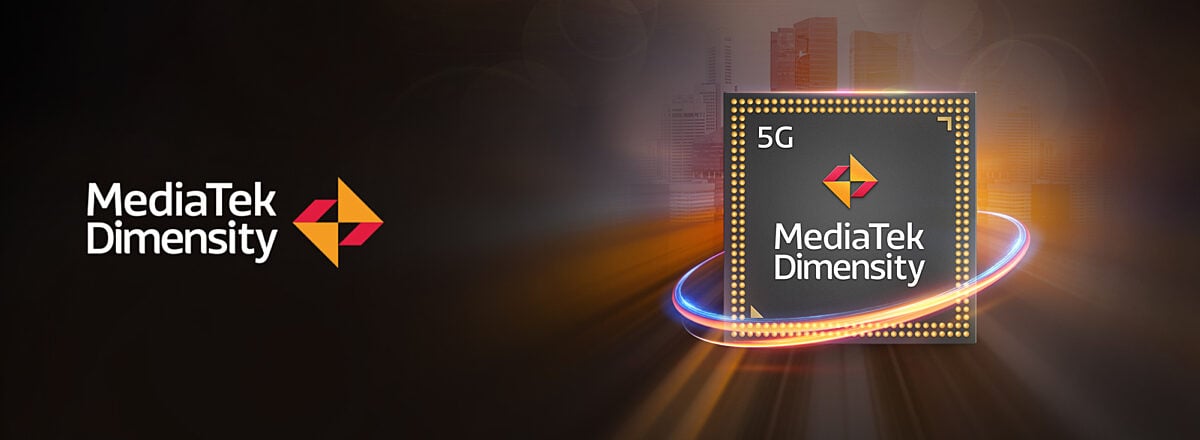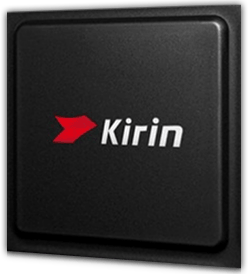HiSilicon Kirin 810 vs Apple A16 Bionic
Last updated:
CPU comparison with benchmarks
|
|

|
|
| HiSilicon Kirin 810 | Apple A16 Bionic | |
CPU comparisonHiSilicon Kirin 810 or Apple A16 Bionic - which processor is faster? In this comparison we look at the differences and analyze which of these two CPUs is better. We compare the technical data and benchmark results.
The HiSilicon Kirin 810 has 8 cores with 8 threads and clocks with a maximum frequency of 2.20 GHz. Up to 6 GB of memory is supported in 4 memory channels. The HiSilicon Kirin 810 was released in Q2/2019. The Apple A16 Bionic has 6 cores with 6 threads and clocks with a maximum frequency of 3.46 GHz. The CPU supports up to 6 GB of memory in 1 memory channels. The Apple A16 Bionic was released in Q3/2022. |
||
| HiSilicon Kirin (29) | Family | Apple A series (22) |
| HiSilicon Kirin 810/820 (3) | CPU group | Apple A16 (1) |
| 6 | Generation | 16 |
| Cortex-A76 / Cortex-A55 | Architecture | A16 |
| Mobile | Segment | Mobile |
| -- | Predecessor | Apple A15 Bionic (5-GPU) |
| -- | Successor | Apple A17 Pro |
|
|
||
CPU Cores and Base FrequencyThe HiSilicon Kirin 810 has 8 CPU cores and can calculate 8 threads in parallel. The clock frequency of the HiSilicon Kirin 810 is 2.20 GHz while the Apple A16 Bionic has 6 CPU cores and 6 threads can calculate simultaneously. The clock frequency of the Apple A16 Bionic is at 3.46 GHz. |
||
| HiSilicon Kirin 810 | Characteristic | Apple A16 Bionic |
| 8 | Cores | 6 |
| 8 | Threads | 6 |
| hybrid (big.LITTLE) | Core architecture | hybrid (big.LITTLE) |
| No | Hyperthreading | No |
| No | Overclocking ? | No |
| 2.20 GHz 2x Cortex-A76 |
A-Core | 3.46 GHz 2x Everest |
| 1.90 GHz 6x Cortex-A55 |
B-Core | 2.02 GHz 4x Sawtooth |
Artificial Intelligence and Machine LearningProcessors with the support of artificial intelligence (AI) and machine learning (ML) can process many calculations, especially audio, image and video processing, much faster than classic processors. Algorithms for ML improve their performance the more data they have collected via software. ML tasks can be processed up to 10,000 times faster than with a classic processor. |
||
| HiSilicon Kirin 810 | Characteristic | Apple A16 Bionic |
| -- | AI hardware | Apple Neural Engine |
| -- | AI specifications | 16 Neural cores @ 17 TOPS |
Internal GraphicsThe HiSilicon Kirin 810 or Apple A16 Bionic has integrated graphics, called iGPU for short. The iGPU uses the system's main memory as graphics memory and sits on the processor's die. |
||
| ARM Mali-G52 MP6 | GPU | Apple A16 (5 GPU Cores) |
| 0.85 GHz | GPU frequency | 1.34 GHz |
| -- | GPU (Turbo) | -- |
| Bifrost 2 | GPU Generation | 13 |
| 12 nm | Technology | 4 nm |
| 2 | Max. displays | 3 |
| 16 | Compute units | 20 |
| 288 | Shader | 640 |
| No | Hardware Raytracing | No |
| No | Frame Generation | No |
| 4 GB | Max. GPU Memory | 6 GB |
| 12 | DirectX Version | -- |
Hardware codec supportA photo or video codec that is accelerated in hardware can greatly accelerate the working speed of a processor and extend the battery life of notebooks or smartphones when playing videos. |
||
| ARM Mali-G52 MP6 | GPU | Apple A16 (5 GPU Cores) |
| Decode / Encode | Codec h265 / HEVC (8 bit) | Decode / Encode |
| Decode / Encode | Codec h265 / HEVC (10 bit) | Decode / Encode |
| Decode / Encode | Codec h264 | Decode / Encode |
| Decode / Encode | Codec VP9 | Decode / Encode |
| Decode / Encode | Codec VP8 | Decode / Encode |
| No | Codec AV1 | No |
| Decode / Encode | Codec AVC | Decode |
| Decode / Encode | Codec VC-1 | Decode |
| Decode / Encode | Codec JPEG | Decode / Encode |
Memory & PCIeThe HiSilicon Kirin 810 can use up to 6 GB of memory in 4 memory channels. The maximum memory bandwidth is --. The Apple A16 Bionic supports up to 6 GB of memory in 1 memory channels and achieves a memory bandwidth of up to 51.2 GB/s. |
||
| HiSilicon Kirin 810 | Characteristic | Apple A16 Bionic |
| LPDDR4X-2133 | Memory | LPDDR5-6400 |
| 6 GB | Max. Memory | 6 GB |
| 4 (Quad Channel) | Memory channels | 1 (Single Channel) |
| -- | Max. Bandwidth | 51.2 GB/s |
| No | ECC | No |
| -- | L2 Cache | 20.00 MB |
| 1.00 MB | L3 Cache | 24.00 MB |
| -- | PCIe version | -- |
| -- | PCIe lanes | -- |
| -- | PCIe Bandwidth | -- |
Thermal ManagementThe thermal design power (TDP for short) of the HiSilicon Kirin 810 is 5 W, while the Apple A16 Bionic has a TDP of 7.25 W. The TDP specifies the necessary cooling solution that is required to cool the processor sufficiently. |
||
| HiSilicon Kirin 810 | Characteristic | Apple A16 Bionic |
| 5 W | TDP (PL1 / PBP) | 7.25 W |
| -- | TDP (PL2) | -- |
| -- | TDP up | -- |
| -- | TDP down | -- |
| -- | Tjunction max. | -- |
Technical detailsThe HiSilicon Kirin 810 is manufactured in 7 nm and has 1.00 MB cache. The Apple A16 Bionic is manufactured in 4 nm and has a 44.00 MB cache. |
||
| HiSilicon Kirin 810 | Characteristic | Apple A16 Bionic |
| 7 nm | Technology | 4 nm |
| Chiplet | Chip design | Chiplet |
| Armv8-A (64 bit) | Instruction set (ISA) | Armv8.6-A (64 bit) |
| -- | ISA extensions | -- |
| -- | Socket | -- |
| None | Virtualization | None |
| No | AES-NI | No |
| Android | Operating systems | iOS |
| Q2/2019 | Release date | Q3/2022 |
| -- | Release price | -- |
| show more data | show more data | |
Rate these processors
Average performance in benchmarks
⌀ Single core performance in 2 CPU benchmarks
⌀ Multi core performance in 3 CPU benchmarks
Geekbench 5, 64bit (Single-Core)
Geekbench 5 is a cross plattform benchmark that heavily uses the systems memory. A fast memory will push the result a lot. The single-core test only uses one CPU core, the amount of cores or hyperthreading ability doesn't count.
|
|
HiSilicon Kirin 810
8C 8T @ 2.20 GHz |
||
|
|
Apple A16 Bionic
6C 6T @ 3.46 GHz |
||
Geekbench 5, 64bit (Multi-Core)
Geekbench 5 is a cross plattform benchmark that heavily uses the systems memory. A fast memory will push the result a lot. The multi-core test involves all CPU cores and taks a big advantage of hyperthreading.
|
|
HiSilicon Kirin 810
8C 8T @ 2.20 GHz |
||
|
|
Apple A16 Bionic
6C 6T @ 3.46 GHz |
||
Geekbench 6 (Single-Core)
Geekbench 6 is a benchmark for modern computers, notebooks and smartphones. What is new is an optimized utilization of newer CPU architectures, e.g. based on the big.LITTLE concept and combining CPU cores of different sizes. The single-core benchmark only evaluates the performance of the fastest CPU core, the number of CPU cores in a processor is irrelevant here.
|
|
HiSilicon Kirin 810
8C 8T @ 2.20 GHz |
||
|
|
Apple A16 Bionic
6C 6T @ 3.46 GHz |
||
Geekbench 6 (Multi-Core)
Geekbench 6 is a benchmark for modern computers, notebooks and smartphones. What is new is an optimized utilization of newer CPU architectures, e.g. based on the big.LITTLE concept and combining CPU cores of different sizes. The multi-core benchmark evaluates the performance of all of the processor's CPU cores. Virtual thread improvements such as AMD SMT or Intel's Hyper-Threading have a positive impact on the benchmark result.
|
|
HiSilicon Kirin 810
8C 8T @ 2.20 GHz |
||
|
|
Apple A16 Bionic
6C 6T @ 3.46 GHz |
||
iGPU - FP32 Performance (Single-precision GFLOPS)
The theoretical computing performance of the internal graphics unit of the processor with simple accuracy (32 bit) in GFLOPS. GFLOPS indicates how many billion floating point operations the iGPU can perform per second.
|
|
HiSilicon Kirin 810
ARM Mali-G52 MP6 @ 0.85 GHz |
||
|
|
Apple A16 Bionic
Apple A16 (5 GPU Cores) @ 1.34 GHz |
||
AnTuTu 9 Benchmark
The AnTuTu 9 benchmark is very well suited to measuring the performance of a smartphone. AnTuTu 9 is quite heavy on 3D graphics and can now also use the "Metal" graphics interface. In AnTuTu, memory and UX (user experience) are also tested by simulating browser and app usage. AnTuTu version 9 can compare any ARM CPU running on Android or iOS. Devices may not be directly comparable when benchmarked on different operating systems.
In the AnTuTu 9 benchmark, the single-core performance of a processor is only slightly weighted. The rating is made up of the multi-core performance of the processor, the speed of the working memory, and the performance of the internal graphics.
In the AnTuTu 9 benchmark, the single-core performance of a processor is only slightly weighted. The rating is made up of the multi-core performance of the processor, the speed of the working memory, and the performance of the internal graphics.
|
|
HiSilicon Kirin 810
8C 8T @ 2.20 GHz |
||
|
|
Apple A16 Bionic
6C 6T @ 3.46 GHz |
||
AnTuTu 10 Benchmark
The AnTuTu 10 benchmark is one of the best-known benchmarks for mobile processors, which is now available in version 10. There is a version for Android-based smartphones and tablets, as well as a version for Apple mobile devices, i.e. iPhones and iPads.
The Antutu 10 benchmark has 3 phases. In the first phase, the device's RAM is tested, in phase 2 the graphics are tested and in the final phase the entire device is pushed to its performance limits by rendering 3D graphics.
Antutu 10 is therefore ideal for comparing the performance of different devices.
The Antutu 10 benchmark has 3 phases. In the first phase, the device's RAM is tested, in phase 2 the graphics are tested and in the final phase the entire device is pushed to its performance limits by rendering 3D graphics.
Antutu 10 is therefore ideal for comparing the performance of different devices.
|
|
HiSilicon Kirin 810
8C 8T @ 2.20 GHz |
||
|
|
Apple A16 Bionic
6C 6T @ 3.46 GHz |
||
AnTuTu 8 Benchmark
The AnTuTu 8 Benchmark measures the performance of a SoC. AnTuTu benchmarks the CPU, GPU, Memory as well as the UX (User Experience) by simulating browser and app usage. AnTuTu can benchmark any ARM CPU that runs under Android or iOS. Devices may not be directly compareable if the benchmark has been performed under different operating systems.
In the AnTuTu 8 benchmark, the single-core performance of a processor is only slightly weighted. The evaluation consists of the multi-core performance of the processor, the speed of the RAM and the performance of the internal graphics.
In the AnTuTu 8 benchmark, the single-core performance of a processor is only slightly weighted. The evaluation consists of the multi-core performance of the processor, the speed of the RAM and the performance of the internal graphics.
|
|
HiSilicon Kirin 810
8C 8T @ 2.20 GHz |
||
|
|
Apple A16 Bionic
6C 6T @ 3.46 GHz |
||
Performance for Artificial Intelligence (AI) and Machine Learning (ML)
Processors with the support of artificial intelligence (AI) and machine learning (ML) can process many calculations, especially audio, image and video processing, much faster than classic processors. The performance is given in the number (trillions) of arithmetic operations per second (TOPS).
|
|
HiSilicon Kirin 810
8C 8T @ 2.20 GHz |
||
|
|
Apple A16 Bionic
6C 6T @ 3.46 GHz |
||
Devices using this processor |
|
| HiSilicon Kirin 810 | Apple A16 Bionic |
| Huawei Honor 9X Pro Huawei Honor Play 4T Pro Huawei MatePad 10.4 Huawei Nova 5i Pro Huawei P40 Lite |
Apple iPhone 14 Pro Apple iPhone 14 Pro Max |
News and articles for the HiSilicon Kirin 810 and the Apple A16 Bionic

MediaTek Dimensity 9000+ vs Apple A16 and Snapdragon 8+ Gen 1
Posted by Stefan on 2022-09-22
With the Dimensity 9000+, Mediatek presents the latest of its smartphone chips. The successor to the Mediatek Dimensity 9000 achieves higher CPU and GPU clock frequencies thanks to better binning. The CPU clock of the prime core (A core) increases from 3.0 to 3.2 GHz. And the ARM Mali-G710 MP10 GPU can now clock at 0.9 GHz (previously 0.85 GHz).
Both are a good improvement over the Dimensity 9000 in theory but the increase in performance should not usually be noticeable in practice. In the end, the overall performance of the Mediatek Dimensity 9000+ is impressive: Qualcomm Snapdragon 8+ Gen 1 is beaten in Geekbench 5 in both the single-core and multi-core benchmarks.
Both are a good improvement over the Dimensity 9000 in theory but the increase in performance should not usually be noticeable in practice. In the end, the overall performance of the Mediatek Dimensity 9000+ is impressive: Qualcomm Snapdragon 8+ Gen 1 is beaten in Geekbench 5 in both the single-core and multi-core benchmarks.

What we know about the new Apple A16 Bionic in Apples iPhone 14
Posted by Stefan on 2022-08-23
Every year Apple releases a new iPhone series and with the release of the series always the latest Apple A processor. This has become even more important in recent years, as it has also formed the basis for Apple's M processor series since 2020. The Apple M processors are based on the same core architecture as the Apple A processors, but have been significantly upgraded in many areas such as memory bandwith, amount of memory or cache.
Popular comparisons containing this CPUs
back to index

